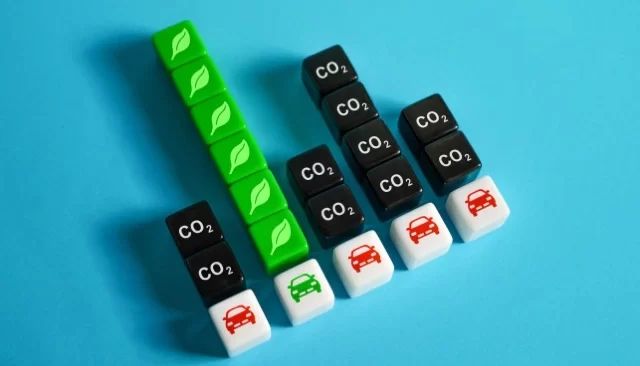In recent years electric vehicles (EVs) have earned the title of being a sustainable and environmentally friendly way to travel. EVs, however, still have some misconceptions surrounding them that prevent people from fully embracing them. Below are five common myths about EVs that every potential buyer must be aware of Myth #3 is still Controversial!
Myth #1: Electric vehicles are not as safe as traditional gasoline-powered vehicles.
FACT: Major electric vehicles meet the ANCAP safety standards in Australia.
ANCAP, the independent authority on vehicle safety for Australia and New Zealand, has been conducting safety tests and assessments on various vehicle makes and models, regardless of whether they are powered by gasoline or battery. Over the last 30 years, ANCAP has published safety ratings for thousands of vehicles, ensuring they meet stringent safety requirements.
Take Tesla Model Y for instance, it impressed across all four pillars of ANCAP’s assessment, achieving a record score of 98% in the Safety Assist pillar, and the highest Adult Occupant Protection score to date against the latest 2020-2022 rating criteria (97%). Moreover, EVs are designed with additional safety features, such as shutting down the electrical system when detecting a collision or short circuit. This makes them just as safe, if not safer, than their gasoline-powered counterparts.
Myth #2: There isn’t enough charging infrastructure for EVs.
FACT: The charging infrastructure in Australia is well built-out and continuously improving.
According to Origins Future Energy Report, while 42% of respondents named the lack of charging infrastructure as a barrier to owning an EV, it’s essential to understand the actual situation. Approximately 80% of EV charging is done at home or workplaces, which is incredibly convenient for daily commuting needs.
For longer journeys and areas with limited access to off-street parking, there is a growing network of public charging stations. Currently, Australia boasts nearly 2400 public charging locations, and this network is expanding day by day. Smartphone apps and digital screens in EVs help users locate nearby charging stations easily.
Myth #3: EVs are not environmentally friendly due to manufacturing emissions.
FACT: The lifetime greenhouse gas emissions of EVs are generally lower than those of gasoline-powered vehicles.
One of the most controversial myths, while it is true that manufacturing an EV’s battery requires additional energy and might create more carbon pollution compared to making a gasoline car, the overall lifetime greenhouse gas emissions of an EV are still lower. EVs have zero tailpipe emissions, and when accounting for manufacturing, charging, and driving, they typically produce fewer greenhouse gases than gasoline cars.
Studies by researchers at Argonne National Laboratory have shown that the total greenhouse gas emissions associated with driving an EV with a 482 KM electric range are lower than those of a gasoline car. Additionally, recycling EV batteries can further reduce emissions by minimizing the need for new materials.
Myth #4: EVs do not have enough range for the daily commute – range anxiety.
FACT: Modern EVs offer ample range for daily commuting needs.
EV technology has significantly improved in recent years, and today, EV models available in Australia can travel anywhere from 300 to 650 kilometres per charge. For instance, the Polestar 2 long-range single motor boasts an impressive 654km of range, while Tesla Model 3 long-range offers 602km, and Tesla Model Y Long Range and Ford Mustang Mach-E premium have 600km of range.
For long trips, Australia’s public charging network allows cars to charge quickly, reducing range anxiety. With some careful planning and utilizing the charging infrastructure, travelling long distances in an EV is feasible.
Myth #5: EVs are expensive.
FACT: EV prices have significantly dropped in recent years, thanks to government incentives and price wars among major brands.
EVs were once considered expensive, but the scenario has drastically changed. Governments around the world, including Australia, have introduced various incentives and subsidies to promote the adoption of electric vehicles. These incentives have played a crucial role in reducing EV prices and making them more accessible to the public.
Furthermore, major EV brands like Tesla, Ford, BYD, MG, and others are competing fiercely, leading to a price war that benefits consumers. Recent launches of affordable EV models like the BYD Dolphin and MG4 have further contributed to making EVs more affordable, with starting prices as low as $39,000.
Conclusion
Electric vehicles have come a long way in dispelling the myths that have held them back from widespread adoption. With advanced safety features, an ever-expanding charging infrastructure, lower lifetime emissions, ample range for daily use, and affordable prices, EVs are proving to be a viable and sustainable transportation solution. As technology continues to improve and governments support the transition to clean energy, the future of electric vehicles looks brighter than ever before. So, if you’re considering buying an EV, go ahead and make the switch to help create a cleaner and greener future for our planet.

